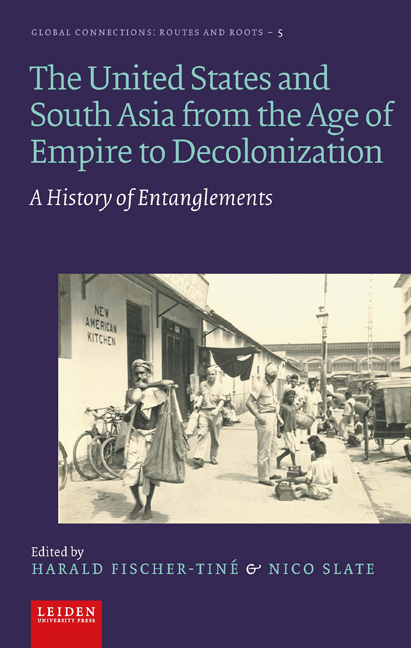 The United States and South Asia from the Age of Empire to Decolonization
The United States and South Asia from the Age of Empire to Decolonization Published online by Cambridge University Press: 07 January 2025
As sites of British imperial state-making and resistance to colonial power, India and the United States have found themselves entangled since the late eighteenth century. To choose a paradigmatic moment, the dumping of East India Company tea into Boston Harbour in 1773 offers a view onto multiple levels of this entanglement. The cargo and the participants—white settlers who adopted a pretended Indigenous “costume” to claim a native identity as “Indians”—reflected the discursive entanglement of the Americas with South Asia in European thought going back to Columbus. Yet, to say that India and the United States have been entangled for centuries raises more interesting questions: what is this unit called “India”? Or “the United States”? What might it mean for such units to be “entangled”? And, crucially, who are the agents of this entanglement? What is being entangled, where does this entanglement happen, and who is doing the entangling?
The chapters in this volume address these questions concretely. Chapters track people-in-motion, things-in-motion, ideas-in-motion, and practices-in-motion, with each line of motion also a vector—vectors carrying magnitude, leaving residue, and creating memory, like so many shoelaces criss-crossed over time and space. This motion went to, from, and within Bombay, Boston, Calcutta, Delhi, Hartford, Hawaii, London, New York, Philadelphia, Rudragar (Pantagar), San Francisco, Tasmania, and countless other places. People, things, ideas, and practices moved representationally through newspapers, theatres, sheet music, colleges, and motion pictures, but all these were transported by train and steamship or communicated by telegraph—for example, the Kansas grain shipped to India in 1897 and 1900, using funds mobilized through the New York Christian Herald, as described by Joanna Simonow in Chapter 4. The specific dependence on these nineteenth-century technologies places the Indo-U.S. entanglement within a certain moment of global history, a moment which enabled the emergence of coherent units to correspond to the labels “India” and the “United States.”
All the movement described in this volume took place in the aftermath of the dawning age of steam from the mid-nineteenth century, when railroads—and then steamships and the telegraph—would accelerate motion across vast space, prompting the consolidation of territories. These holdings were “battered, shaken, and undermined” by the “invincible force” of steam and its technological progeny.
To save this book to your Kindle, first ensure no-reply@cambridge.org is added to your Approved Personal Document E-mail List under your Personal Document Settings on the Manage Your Content and Devices page of your Amazon account. Then enter the ‘name’ part of your Kindle email address below. Find out more about saving to your Kindle.
Note you can select to save to either the @free.kindle.com or @kindle.com variations. ‘@free.kindle.com’ emails are free but can only be saved to your device when it is connected to wi-fi. ‘@kindle.com’ emails can be delivered even when you are not connected to wi-fi, but note that service fees apply.
Find out more about the Kindle Personal Document Service.
To save content items to your account, please confirm that you agree to abide by our usage policies. If this is the first time you use this feature, you will be asked to authorise Cambridge Core to connect with your account. Find out more about saving content to Dropbox.
To save content items to your account, please confirm that you agree to abide by our usage policies. If this is the first time you use this feature, you will be asked to authorise Cambridge Core to connect with your account. Find out more about saving content to Google Drive.